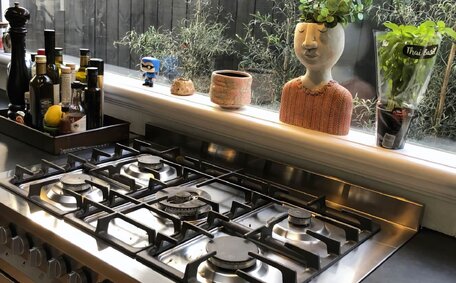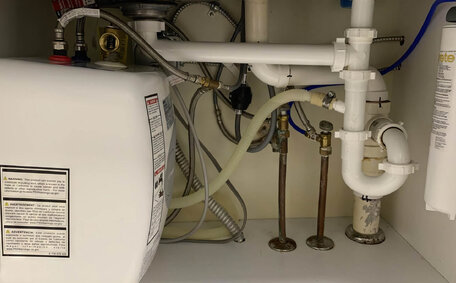Causes of Sewer Backups and Overflows
There are several common causes behind sewer-related issues that can lead to blocked drains, damaged pipes, and overflowing toilets in your home.
One of the most frequent culprits is tree roots. As roots spread underground, they can find their way into cracks or joints in sewer pipes. As roots spread underground, they can find their way into cracks or joints in sewer pipes.
Sewer line blockages caused by tree roots entering your home’s sewer drain or the main sewer line are a major reason for sewer backups and overflows.
Another common cause is a build-up of non-biodegradable materials like wet wipes, which do not break down easily. When flushed down the toilet, wet wipes can snag on pipe imperfections and accumulate over time, leading to clogged drains. Grease and food waste that coats and congeals on the inside of pipes can also cause obstructions.
Factors like ground shifting and pipe corrosion can damage sewer pipes, allowing roots, debris and sediment to enter.
Sections of pipe can also collapse or disconnect. Infiltration from floodwaters or high groundwater levels can likewise overwhelm sewers. These issues allow raw sewage to back up and overflow into homes.
If you suspect any of these issues, contact a professional plumber immediately. They can advise if your sewer system needs repair and help prevent health hazards from exposure to contaminated water.
Health and Safety Risks
Sewage backups and overflows pose serious health and safety hazards that require caution.
Raw sewage contains harmful bacteria, viruses, parasites and toxic chemicals. Direct contact can lead to gastrointestinal illness such as norovirus, hepatitis A and gastroenteritis. Symptoms include nausea, vomiting, stomach cramps and diarrhoea.
Methane and hydrogen sulphide gases can also be released, resulting in headaches, dizziness, and irritation to eyes and throat. Long-term exposure may affect respiratory and nervous systems.
When cleaning up after a sewage backup, protect yourself by wearing gloves, boots, goggles and face masks. Anything the sewage touched should be disinfected or discarded if porous. Keep children and pets away from affected areas.
Seek medical attention if you have wounds exposed to sewage or experience severe symptoms. Ventilate the area well and do not use any water until it is safe, to avoid spreading contamination.
Preventing exposure is crucial. Have any sewage spills or plumbing issues repaired immediately by a professional plumber to mitigate health risks.
Preventing and Dealing with Sewer Odors
Unpleasant sewer odours in and around your home can be annoying and concerning. There are several methods homeowners can use to prevent bad sewer smells or mitigate them when they occur.
Preventive Measures
To help avoid sewer gas smells in the first place:
- Have a professional plumber inspect your plumbing and sewer lines annually to identify potential issues before they turn into problems.
- Use plenty of water when flushing toilets and running appliances like dishwashers to keep sewage flowing swiftly through pipes.
- Only flush toilet paper and human waste down toilets - avoid flushing wipes, grease, and other materials that can cause blockages in pipes.
- Install vent pipes on your plumbing system to allow sewer gases to escape outside.
- Consider planting trees and shrubs away from sewer lines to prevent root intrusion damage.
- Seal pipe joints, cracks, and access points using caulk or expandable foam to prevent sewer gas leaks.
Dealing with Existing Odours
If smells persist, try these tactics to mitigate odours:
- Pour 1/2 cup baking soda or vinegar down drains followed by boiling water to break up grease or other clogs.
- Place drain screens over floor drains and shower drains to prevent gas release.
- Seal floor drains with plastic sheeting and duct tape, leaving vent holes.
- Pour water into seldom-used drains weekly to keep P-traps full.
- Place open bowls of vinegar around affected areas to absorb odours.
For persistent or severe sewer smells, hire a professional plumber to inspect your system for damaged pipes, clogs, or improper venting that requires repair.
Clearing Sewer Clogs and Blockages
If you notice slow drains, gurgling sounds, bad odours, or overflowing water, you likely have a blocked sewer line.
While chemical drain cleaners available at hardware stores may seem like a quick DIY solution, they can cause severe burns or release toxic gases. For your safety, avoid using these products to clear sewer obstructions.
Instead, call a professional plumber to accurately locate, diagnose and remove the blockage. Obstructions in main sewer lines require specialised equipment like hydro-jetters, rodding machines and CCTV inspections.
Plumbers have the tools and expertise to clear out grease, tree roots, collapsed pipes and other debris blocking your sewer without injury or hazardous chemicals.
For preventive maintenance, have your sewer lines professionally inspected annually and avoid flushing anything except human waste and toilet paper. Address any issues immediately to prevent backups and damage that can necessitate expensive repairs.
Identifying Problems with Sewer Pipes
There are several signs of potential problems with your sewer pipes you should watch out for:
- Foul sewage odours inside or outside your home
- Gurgling sounds from plumbing fixtures
- Slow or backed up drains
- Toilets, sinks, tubs or showers draining slowly
- Sewage spilling out of manhole covers or overflow drains
- Wet spots, ponding or lush plant growth in your yard above sewer lines
- Low spots or cave-ins along the sewer line route
- Roots protruding through pipe joints or cracks
- Corroded or damaged sections of sewer pipe visible during inspection
These issues usually indicate damaged, blocked or broken sewer pipes. Underground pipes can deteriorate over time due to root intrusion, ground shifting, wear and tear. Sections may crack, separate or collapse.
If you notice any signs of sewer pipe problems, immediately contact a professional plumber for inspection and repair. They can use specialised tools like video pipe inspection to diagnose issues. Swift action helps prevent hazardous sewage backups, overflows and contamination.
Seeking Professional Plumbing Services
Dealing with sewer and drain issues can be extremely hazardous without proper training and equipment. When sewage backups, overflows, or foul odours arise, it’s crucial to seek help from licenced professional plumbers rather than attempting DIY fixes.
The team at Strathfield Plumbing has the expertise to accurately diagnose sewer and drain problems and remedy them safely and effectively. We use state-of-the-art methods like CCTV drain inspections to locate blockages and damage. Our hydro jetting, high-pressure water cleaning, and rodding techniques can clear even severe obstructions.
For emergency sewage cleanups, our staff follows strict protocols to contain contamination and neutralise health risks. We can advise on any necessary remediation or repairs to get your plumbing and sewerage back to full working order.
Don’t wait - serious sewer problems tend to escalate rapidly. Call Strathfield Plumbing today on 1300XXXXXX to schedule an urgent site inspection or emergency service call. We are available 24/7 to tackle any sewer or drain challenge.
Installing and Maintaining Septic Systems
Septic systems require careful installation and ongoing maintenance to prevent issues. A septic tank and drainfield compose the key parts of the system. The septic tank treats waste and the drainfield disposes liquid effluent into the soil.
Proper septic system installation involves:
- Obtaining necessary permits and following local regulations
- Sizing the system correctly based on household occupancy and soil conditions
- Excavating trenches and holes to proper depths based on climate
- Sequencing installation tasks correctly such as laying distribution pipes before backfilling trenches
- Testing the system to ensure it is watertight and functioning
Once installed, regular septic system maintenance is crucial and involves:
- Inspecting the tank annually and pumping it out every 3-5 years or whenever sludge depth nears 1/3 total depth
- Avoiding disposal of grease, chemicals, and solids that can clog the system
- Checking drainfield lines and distribution box for any sign of standing water or backup
- Keeping heavy vehicles and excessive weight off the drainage area
- Maintaining vegetation and plants over the drainfield to promote evapotranspiration
Improper installation or lack of maintenance causes systems to backup or fail. Ensure your system is properly installed and cared for to prevent issues with odours, overflows, contamination, and costly repairs.
Avoiding Damage to Sewer Lines
There are several preventative measures and best practises property owners can adopt to help minimise the risk of damage and issues with their sewer lines:
- Plant trees and vegetation a safe distance away from sewer lines to prevent invasive root systems from infiltrating and breaking pipes. Maintain at least a 3 metre clearance.
- Avoid planting trees with aggressive root systems like willows, elms, oaks, and palms near sewer lines.
- Have old clay or concrete sewer pipes replaced with modern PVC plastic piping, which is more durable and resistant to root damage.
- Install screens or filters on sewer vents and drains to prevent leaves, debris, and pests from entering the system.
- Refrain from flushing anything except toilet paper and human waste down toilets to prevent clogs from wipes, grease, and other debris.
- Clean plumbing fixtures like sinks and showers regularly to clear hair and soap residue before it heads down drains.
- Have your sewer lines professionally inspected annually and address any issues immediately to prevent escalation.
- Ensure manhole covers are properly sealed and secure.
- Protect outdoor plumbing from cold weather by insulating pipes and drains.
Taking preventative measures and addressing any problems at the first signs of trouble are the best ways property owners can avoid costly and hazardous sewer line damage and backups.






